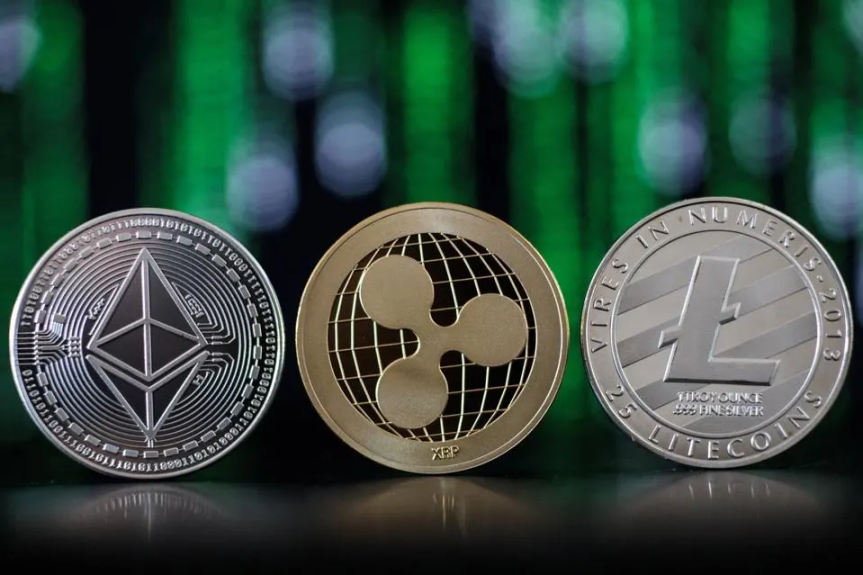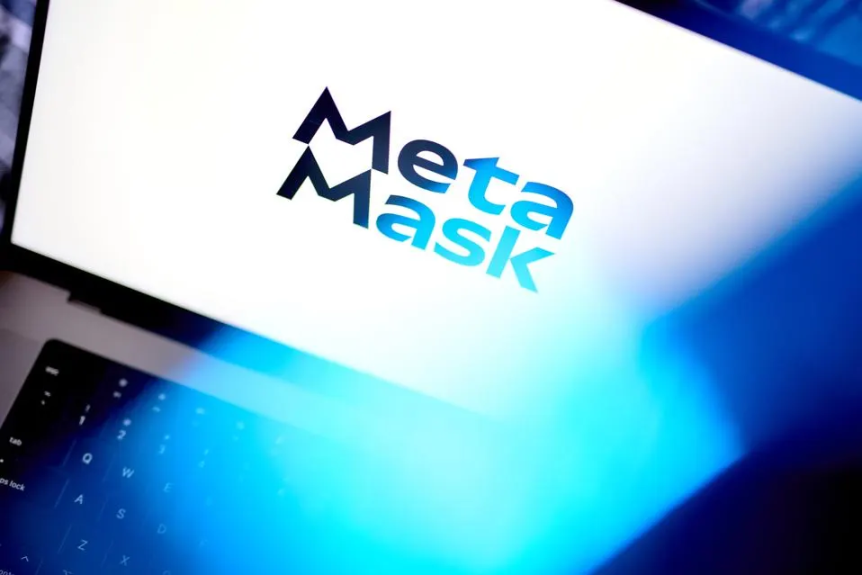The truth about Caiku Company: innovative breakthrough or capital trap?
In August 2020, a prominent business intelligence (BI) software company—MicroStrategy—restructured its business model and adopted Bitcoin as its primary treasury reserve asset. This strategic pivot dramatically raised the company’s profile and accelerated the mainstream adoption of the term “DATCO” (Digital Asset Treasury Company). Since then, MicroStrategy has become a standout name in both finance and cryptocurrency circles.

Michael Saylor, co-founder and executive chairman of MicroStrategy, led the company’s entry into Bitcoin in August 2020. Photographer: Ronda Churchill / Bloomberg
Traditionally, corporate treasury departments have focused exclusively on managing cash, bonds, and other fiat assets. The emergence of digital asset treasury companies is upending this paradigm. As digital assets gain traction, treasury teams are increasingly asking: Should digital assets be included in their portfolios—or even play a central role? This evolution has given rise to a new class of publicly traded companies—Digital Asset Treasury Companies (DATCO)—that are drawing significant attention from the fintech sector. In a recent Forbes article, Coinfund President Chris Perkins dubbed the summer of 2025 “a summer to remember for DATCOs.”
Yet as market enthusiasm intensifies, a fundamental question arises: Are investors drawn to these companies by robust, long-term strategies, or are they merely speculating on asset appreciation?
MicroStrategy’s Shift to DATCO
Founded by Michael Saylor in 1989, MicroStrategy was a pioneer in business intelligence, specializing in data analytics software that empowered corporate decision-making. After going public in 1998, Saylor became the richest individual in Washington, D.C. by early 2000.

MicroStrategy starred during the dot-com era. Although it faced early controversy and did not recapture its peak, the company maintained a successful software business. (Image source: CFOTO / Future Publishing, licensed via Getty Images)
In March 2000, the company faced a critical turning point: Accounting errors forced it to restate its financial results for the prior two years. The stock plummeted 62% in one day following the announcement, prompting an SEC investigation and erasing billions from Saylor’s net worth.
After the dot-com crash, MicroStrategy spent the next two decades as a “respected but unremarkable” enterprise software firm—profitable from software sales but locked in fierce competition with industry giants like Microsoft and Oracle. While Saylor remained in control, the company’s influence faded compared to its boom-era prominence.
In August 2020, Saylor led MicroStrategy’s transformation into a DATCO, investing $250 million to acquire over 21,000 Bitcoins. As of September 15, 2025, the company holds nearly 640,000 Bitcoins valued at $47.2 billion. Over that same period, MicroStrategy’s market cap soared more than 2,700% (92.0% annualized growth), attracting significant interest from finance and fintech professionals.
The Search for Permanent Capital
DATCOs are analogous to “Permanent Capital Vehicles (PCVs)” in energy infrastructure and real estate—such as Master Limited Partnerships (MLPs) or Real Estate Investment Trusts (REITs). Like these vehicles, DATCOs offer investors an innovative, and in many respects superior, way to invest in long-term, illiquid assets.

Master Limited Partnerships (MLPs) have long been the financing backbone of energy and infrastructure investments. (Image source: Getty Images)
Operating companies are drawn to permanent capital for many reasons. In industries where value takes years to realize, permanent capital is “patient capital”: Unlike traditional private equity or venture capital funds, which typically have seven-to-ten-year lifecycles, PCVs are designed to be “evergreen,” enabling issuers and companies to synchronize operations and long-term investment growth.
Structural Advantages of Permanent Capital Vehicles
Permanent capital vehicles emerged in response to market demand for “investment structures tailored to long-term value creation,” especially in private markets. They give investors more stable, patient, and flexible access to high-potential assets.
These vehicles open doors to private equity, private credit, real estate, and other “niche or illiquid private market assets”—historically reserved for institutional investors. While digital asset markets are now more accessible, retail investors still face challenges navigating the vast product landscape and complex participation methods.
Permanent capital vehicles are also more flexible when it comes to investor subscriptions and redemptions (e.g., quarterly or annual liquidity windows)—a core advantage over traditional private funds, which typically require full capital lockup for their duration.
For fund managers and corporate leaders, stable, ongoing capital frees them from “constant fundraising,” allowing them to focus on management, investment operations, and generating returns—boosting their ability to weather short-term market swings. Leadership can execute long-term strategies rather than react to immediate market pressures.
What Sets DATCO Apart
The essence of a Digital Asset Treasury Company (DATCO) is this: A publicly traded company strategically holds “substantial digital assets on its balance sheet” as its principal business function. Unlike conventional firms that treat crypto as a marginal investment or operational tool, a DATCO’s business model centers entirely on accumulating and managing digital assets. MicroStrategy set the standard in August 2020 by converting its cash reserves to Bitcoin.
DATCOs are unique for their “dual identity”: They are both listed companies and capital markets vehicles that give investors direct exposure to specific digital assets. For investors, this is an attractive alternative—no need to hold digital assets directly or via an ETF; instead, they gain exposure through DATCO. Investing in DATCO is considered a “high-beta, leveraged alternative” to the underlying asset, allowing investors to amplify exposure via familiar equity structures.
This model operates on a “reflexive cycle,” enabling rapid growth in favorable markets: As digital asset prices (like Bitcoin) climb, DATCO equity often trades at a premium to its net asset value (NAV). This premium lets the company issue new shares at a premium via at-the-market (ATM) programs, raising funds to acquire more digital assets and increasing per-share asset value for existing investors.
This positive feedback loop is a potent growth engine, but it’s fragile—highly dependent on market sentiment and sustained asset price appreciation.
DATCO in Historical Context: Comparison with Other Permanent Capital Vehicles
Though DATCOs may seem novel, they closely resemble prior “leveraged vehicles for specific asset classes.” Vehicles like REITs and MLPs follow similar principles: exploiting favorable market conditions and cheap capital for returns.
REITs focus on holding, operating, or financing income-producing real estate. When REITs trade at a premium to NAV, they issue new shares to raise capital and buy more properties—creating a virtuous cycle. However, this model is sensitive to interest rate shifts, economic downturns, and market sentiment. When premiums vanish, cheap capital dries up, exposing REITs to both debt repayment and asset acquisition pressures.
In the energy sector, MLPs share historical parallels with DATCOs. MLPs own and operate energy infrastructure (e.g., oil and gas pipelines), and their value is tightly linked to industry health and commodity prices. Historically, MLPs have depended on capital markets for financing and exhibited highly leveraged exposure to their underlying assets. Like DATCOs, MLPs let investors access specific asset classes through publicly traded, tax-advantaged vehicles.
The core risks—financing fragility, reliance on speculative premiums, and market volatility sensitivity—apply equally to DATCOs. These challenges aren’t unique to digital assets; they are inherent to any “leveraged, permanent capital vehicle tied to a specific asset class.”
Long-term success in this space depends on building resilient, value-generating businesses that can weather inevitable down cycles—not just profiting from the “reflexive cycle.”
Outlook: Navigating Opportunities and Risks
The short-term growth prospects of Digital Asset Treasury Companies are at the center of market debate. Optimists believe that multiple factors will fuel expansion.

U.S. Senators Tim Scott (R-SC) and Cynthia Lummis (R-WY) have championed greater transparency in digital asset regulation. Photographer: Liam Kennedy / Bloomberg
First, regulatory transparency is improving. As governments—including the U.S.—build more structured frameworks for digital assets, institutional investor confidence is rising. Regulators are moving from “cautious observation” to “active exploration of integrating digital assets with the financial system,” creating a more predictable business and investment environment.

Illustrations of altcoins like Ethereum, Ripple, and Litecoin. For DATCOs seeking diversification beyond Bitcoin, these assets may present new opportunities. (Image source: Jack Taylor / Getty Images)
Second, institutional adoption of digital assets is irreversible. EY’s 2025 Institutional Investor Survey shows most institutions plan to increase their digital asset allocations, aiming for portfolio diversification. Interest extends beyond Bitcoin to Ethereum, tokenized real-world assets (such as tokenized Treasuries), and stablecoins. In coming years, tokenization of traditional assets is expected to become a trillion-dollar industry, opening expansive opportunities for DATCOs. The stablecoin boom underscores this—Circle’s successful June 2025 IPO highlights a stablecoin market cap above $307 billion, triple the DATCO market size.
Finally, digital assets offer unique advantages—faster settlement, lower financing costs, increased transparency—making them attractive to corporate treasurers seeking to optimize cash management and unlock new value. Fintech firms are rapidly developing solutions to help DATCOs achieve greater operational efficiency.
Risks Beneath the Returns
However, like other permanent capital vehicles, the DATCO model has considerable risks. Its core vulnerability is the “reflexive cycle” driven by trading premiums. The model works smoothly in bull markets, but if sentiment shifts, the cycle can unravel quickly. The loss of premium may trigger a negative feedback loop: companies seeking capital may face sharp equity dilution or high debt costs.

Like REITs, DATCO asset valuations are shaped by external factors such as interest rates and capital costs. (Image source: Charles Krupa / AP, archive image)
This raises another key concern: the cost of capital. Many DATCOs lack substantial operating income and rely heavily on capital markets. While issuing shares at a premium is a powerful tool, it’s not the only one—some use convertible notes and other debt instruments. Dependence on debt can make organizations fragile; in downturns, refinancing and servicing debt may become major risks. For companies with market value highly leveraged to underlying asset prices, financial stability is even more precarious.
Additionally, excessive focus on asset appreciation may cause investors and management to overlook the “hidden costs” of holding digital assets. Beyond initial capital, ongoing costs for custody, security, compliance, and risk management are substantial. Given the volatility of digital asset markets, companies need robust risk frameworks, strong governance, and operational excellence to guard against fraud and cyber threats. Ignoring these essentials poses significant risks.
A Mature Market Will Segment Winners and Losers
Looking ahead, the DATCO market is likely to see clear segmentation. Long-term leaders will need to move beyond a “buy and hold” approach and generate sustainable yields from their digital assets.
Strategies for achieving this include developing ancillary products or services, pursuing vertical integration, or participating in DeFi protocols (such as staking and lending) for additional income. Staking stands out—it can increase holdings of underlying assets and per-share asset growth without issuing more equity.
The most successful DATCOs showcase robust business models that transcend market-driven leverage. By internalizing critical points along the digital asset value chain (custody, trading, asset management), DATCOs can improve operational control and efficiency, delivering a seamless, integrated user experience.
Vertical integration also reduces dependence on third parties—lowering risk and cutting intermediary costs. Greater control of the value chain helps DATCOs understand user behavior and market trends, driving innovation and development of high-demand products.

DATCOs partner with crypto wallet providers like MetaMask to generate yields from treasury assets. Photographer: Gabby Jones / Bloomberg
The appeal of Digital Asset Treasury Companies is evident—they promise amplified returns and usher in a new era of corporate finance. However, investors and analysts must look past “asset appreciation” and focus on the fundamentals: The true test of DATCO strength is not the size of its digital asset holdings during bull markets, but its ability to manage volatility, control financing costs, and build a sustainable business model resilient to downturns. Companies that master these factors are best positioned to define the future of the financial ecosystem as pioneers.
Statement:
- This article is reprinted from [Foresight News] and copyright belongs to the original author [Jeff Gapusan, Forbes]. For reprint objections, please contact the Gate Learn team, which will handle the matter promptly according to established procedures.
- Disclaimer: The views and opinions expressed herein are solely those of the author and do not constitute investment advice.
- Other language versions are translated by the Gate Learn team and may not be copied, distributed, or plagiarized unless Gate is credited.
Related Articles

The Future of Cross-Chain Bridges: Full-Chain Interoperability Becomes Inevitable, Liquidity Bridges Will Decline

Solana Need L2s And Appchains?

Sui: How are users leveraging its speed, security, & scalability?

Navigating the Zero Knowledge Landscape

What is Tronscan and How Can You Use it in 2025?
